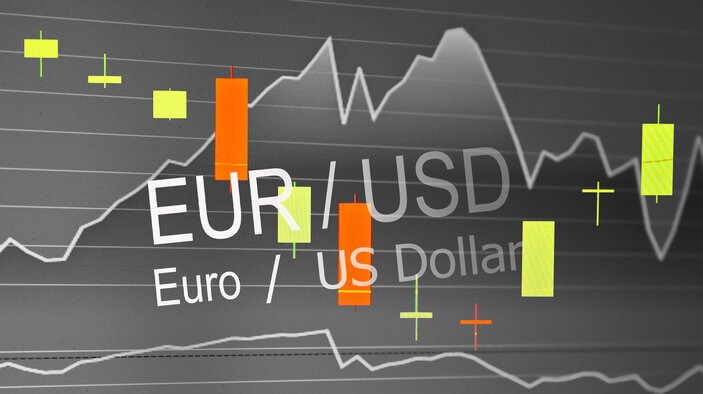The EUR/USD trading pair is among the most popular because Europe and The US are economic magnates of the world. The Euro tends to rise rapidly, and the Us dollar has high liquidity no matter what. The reason is purely political, and while the USD is the world’s most significant reserve currency, EUR became the second in a short time.
How Profitable is it, and When?
You wouldn’t expect it, but EUR/USD is the least good pair often throughout the day, despite how popular they are. Profitability is almost always lower regarding this currency pair when the market is very active (4 AM EST/2 PM EST). This may look odd since it’s the time right after the London Market Exchange opens. Usually, that’s when massive liquidity starts, and there are lots of good opportunities for trading in general.
When the US market opens at 8 AM EST, profitability goes away very quickly after its opening, even though there is an overlapping moment between the US and the UK. Why is that? It looks like the more activity increases, the chances for profitability fall more. It is only after the US market closes (5 PM EST) that profitability stays above 40 % until the UK opens again.
How to Trade Then?
For traders wanting to speculate on EUR/USD, the Asian trading session may be more accommodating than the “active” hours of the day. We can say that this is mostly because, in the Asian market, there are slower price movements. This occurs even during the most active trading times in a day. It is because of the slower price ups and downs that traders decide to do range-trading.
What is Range-Trading Exactly?
Range-Trading is, in essence, the ability to recognize and identify when a specific currency is overbought or oversold. These traders buy these currencies during the oversold time and then sell them during an overbought timeframe. Since range-trading is the weakest during the most active time on the market, it’s only logical to do this on the Asian market.
There are four types of range:
1. Rectangular Range
Pros: Rectangular ranges can incite a period of consolidation and tend to have a shorter time frame, which offers you much faster opportunities for trading.
Cons: If you are not a trader who pays attention to long-term patterns, you can easily be mislead.
2. Diagonal Range
Pros: A trader who does diagonal rages can always expect profit and breakout on the opposite side of the trending movement.
Cons: It is tough to predict whether a breakout will happen in a day or take months until it develops. If you are not a very patient trader, then this is not something we would recommend.
3. Continuation Ranges
Pros: Continuation ranges are frequent, and they can have a quick breakout. This means you can profit quickly.
Cons: We recommend this for more experienced traders because you should take many patterns and variables into account when doing continuation ranges, which might be tricky if you are new to trading.
4. Irregular Ranges
Pros: If you can identify the lines of resistance, then irregular ranges can bring you lots of trading opportunities.
Cons: You will probably have to use a software or some additional tool to track the ranges and the opportunity for a breakout.
The Strategy of Range-Trading in Short
Identify the Range
Of course, we are talking about the trading range. This means paying attention to highs and lows at least twice a day, and seeing how you can locate the currency after it has retreated from a resistance area. When you’re able to pinpoint them, then there is a currency trading range opportunity.
Make Sure to Set Up Your Entry
This step is essential, and you can do it by buying support levels and selling orders near resistance levels. Using indicators the right way should allow you to have stronger control when you are setting up an entry.
Manage Your Risk
Now that you have identified your range and set up your entry, you shouldn’t forget about risk management. It will help you minimize your risk. If something that is not very profitable happens, you can walk away from your position without much damage.
Having a stop loss can also be helpful if you are range trading, since it’s a risky thing, no matter what. If you place a stop-loss above a previous high when you are selling, the resistance zone of a range is highly recommended. Especially since you can freely reverse the process when buying support.
In the End
Regarding EUR/USD currency trades, we tried to offer you some of the best techniques for this type of trading and included the best trading hour. Pay attention to the time difference, and don’t overwhelm yourself. More people are looking into these methods to take advantage of what the forex market has to offer. Remember, your efforts will be most useful when you’re range trading while an appropriate risk management is in place.
















